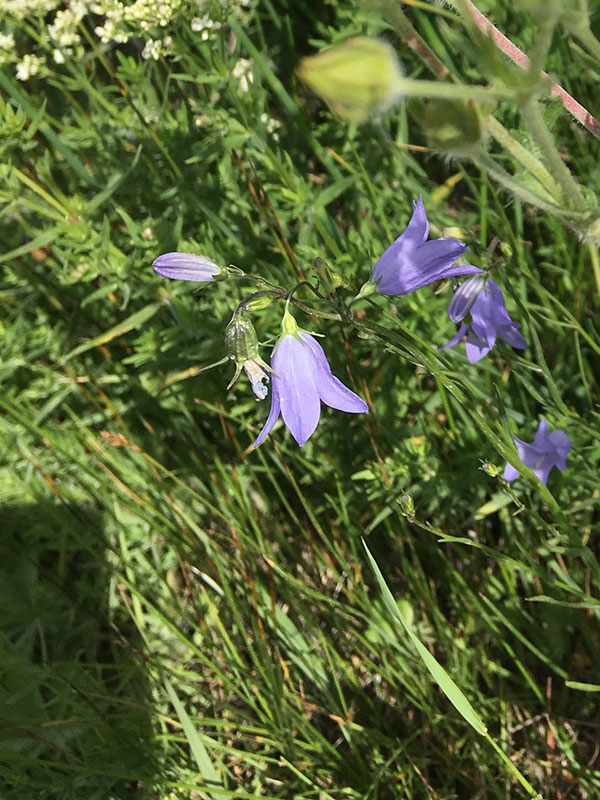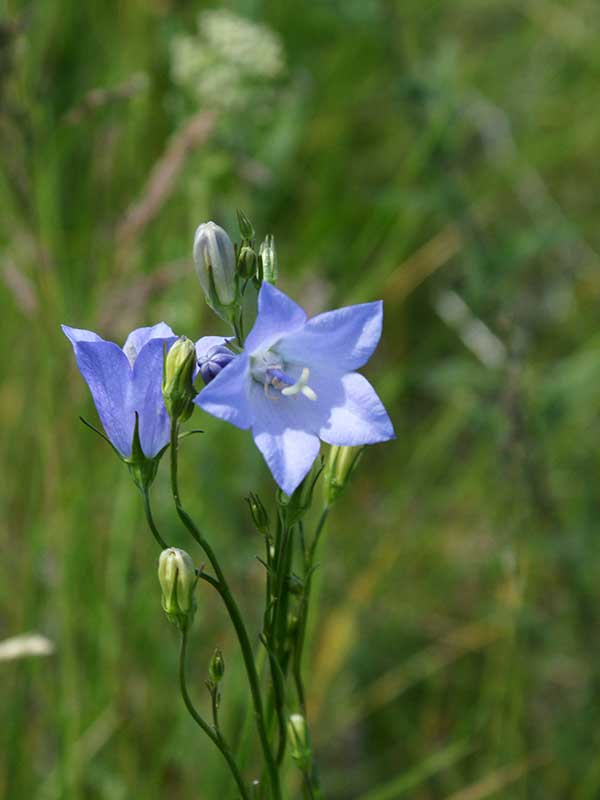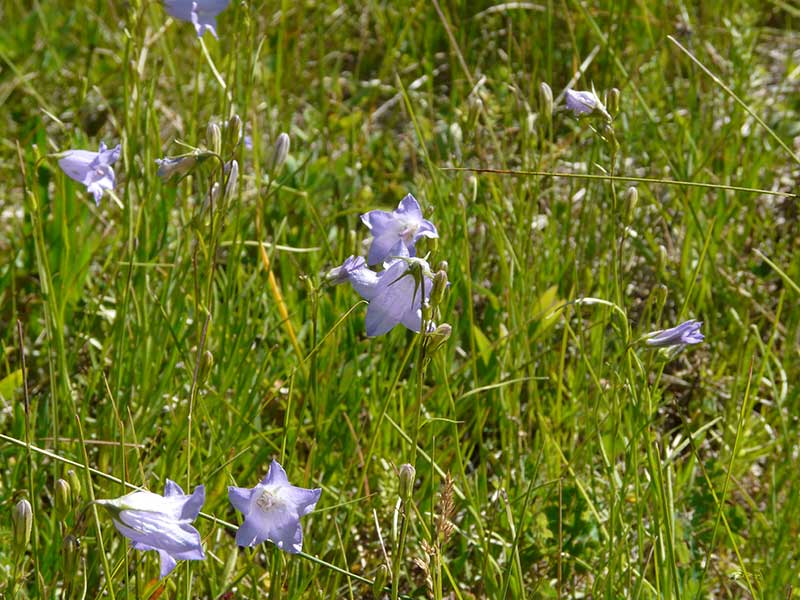Campanula rotundifolia / American harebell
- blue or blue-ish bell-shaped flower
- fused petals with pointy ends make the bell
- exudes white latex when wounded
Also known as: bellflower, bluebell of Scotland, bluebell, witches’ thimble, lady’s thimble, heathbells, fairies’ thimbles, dead men’s bells.
Harebells are attractive little blue or purply or violet-blue flowers which, appropriately, look like little bells hanging from a stalk which extends considerably above the ground-level leaves. These basal leaves are round-ish and wither early on in the season. Thereafter, there remain narrow, pointed leaves on the flower stalk.
Harebells, despite the name “American” are circumpolar, meaning they are found throughout the world. Although they are bee pollinated, they also reproduce and spread clonally using rhizomes.
According to the US Forest Service Plant of the Week site, harebells were associated with witches who could transform themselves into hares, and bring bad luck to anyone who crossed their paths. For now, ignore that and enjoy them.
Despite the sometimes common name of “bluebell of Scotland”, true Scottish bluebells are Hyacynthoides non-scripta, synonym Scilla non-scripta. They are in a completely different family more closely related to lilies (i.e. they are monocots). A field of Scottish bluebells is a thing to behold!
| Color | |
|---|---|
| Family | |
| Blossom size | |
| Inflorescence size | |
| Inflorescence type | |
| When? | |
| Where? |


